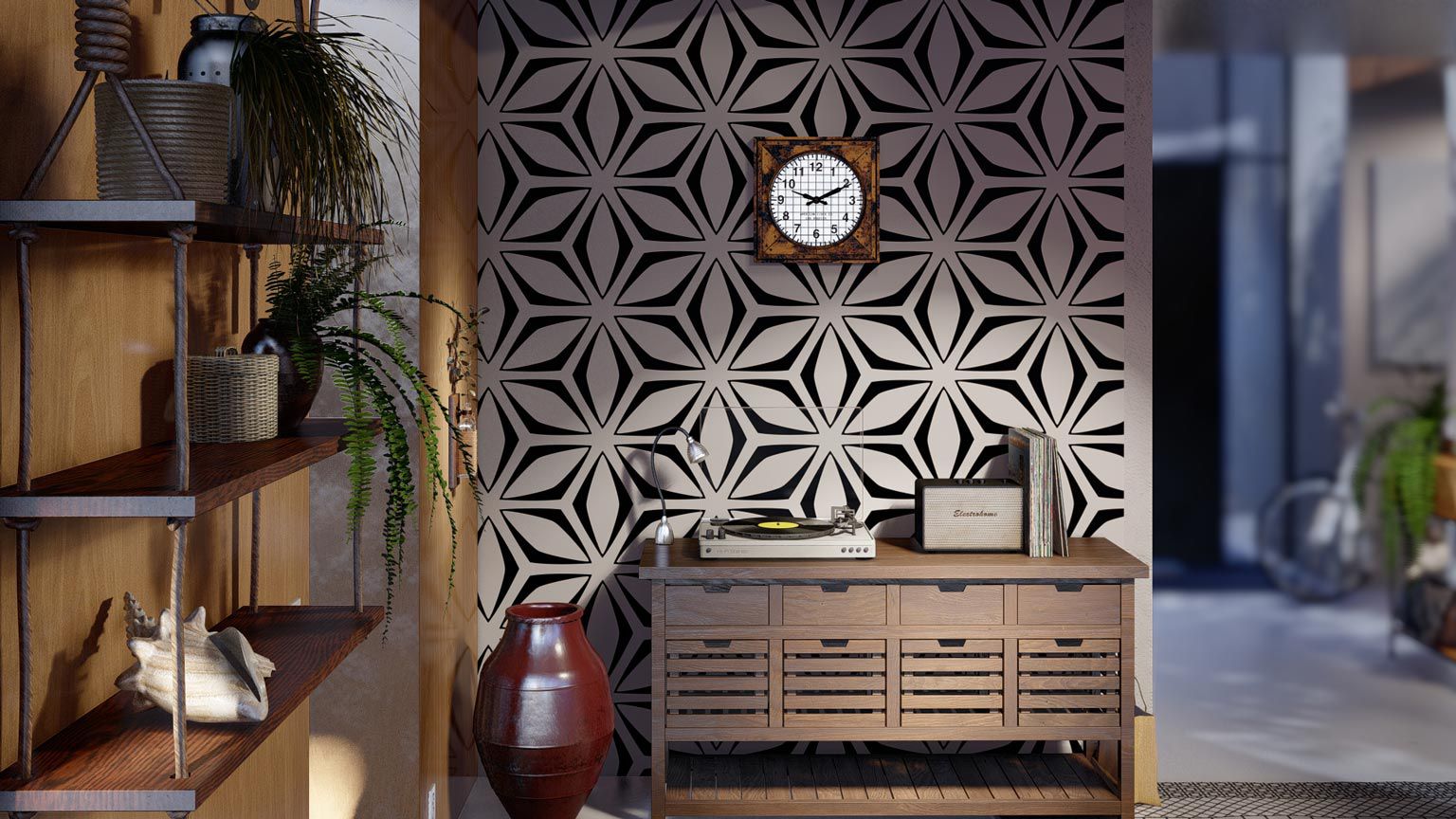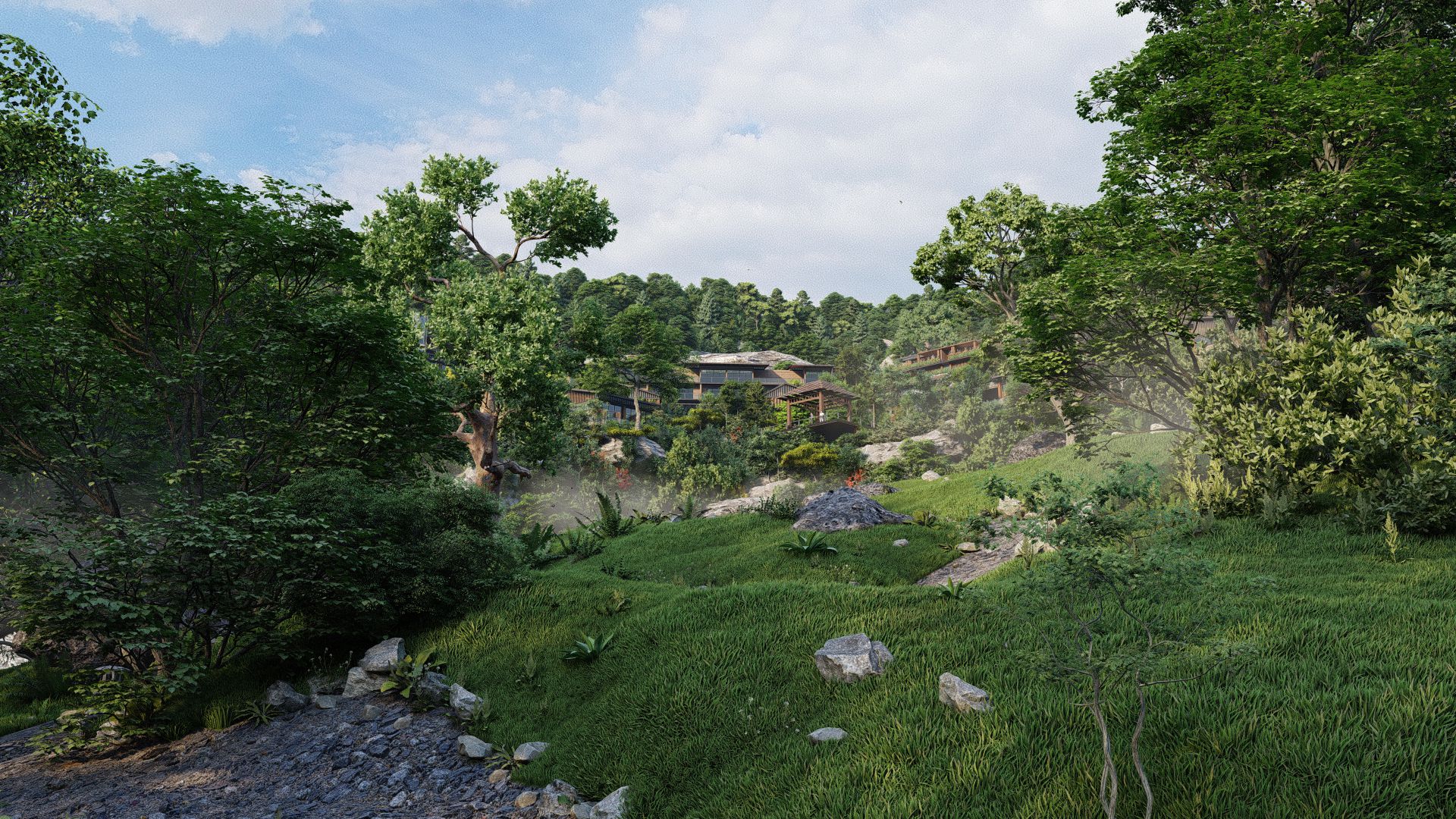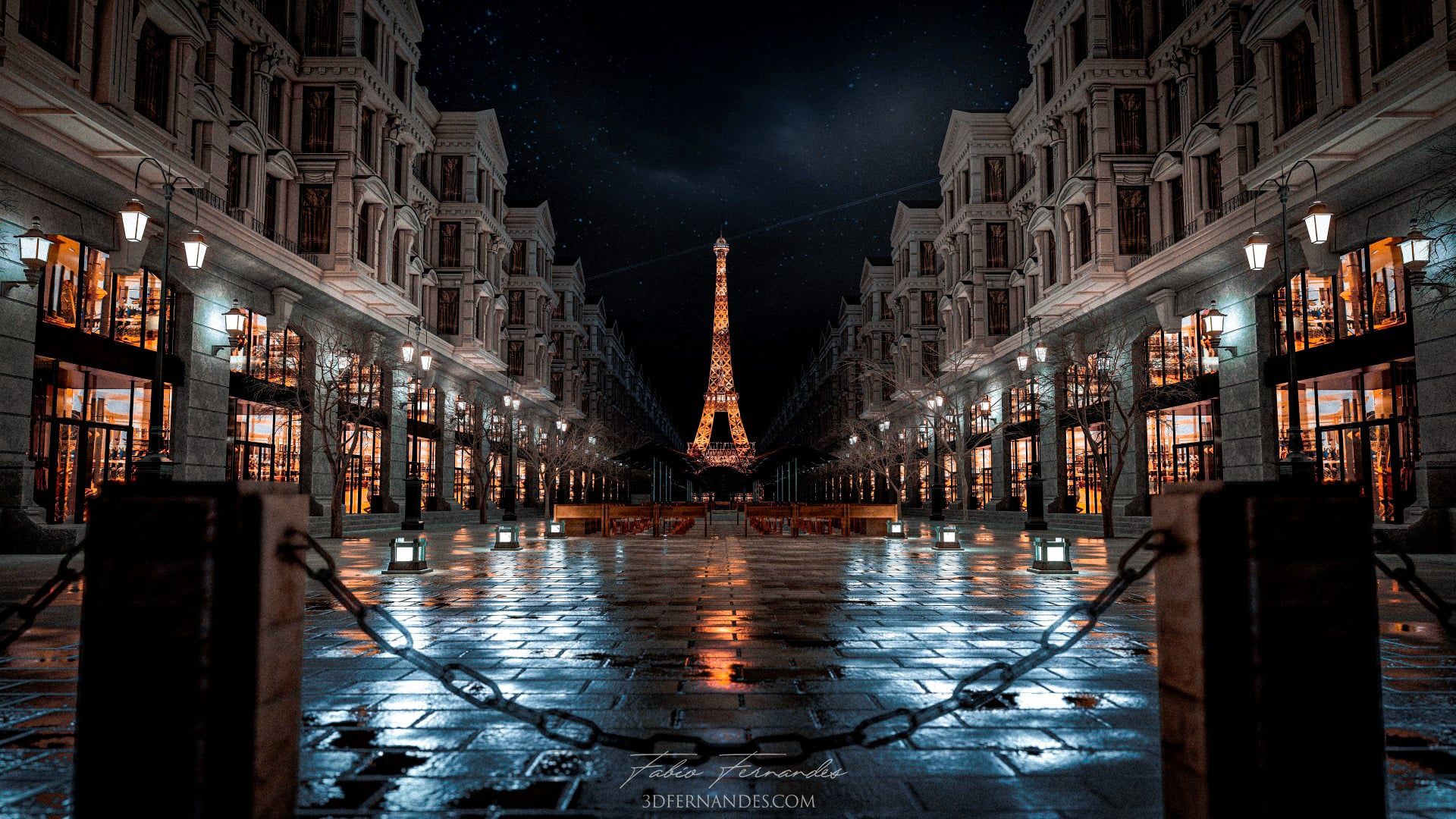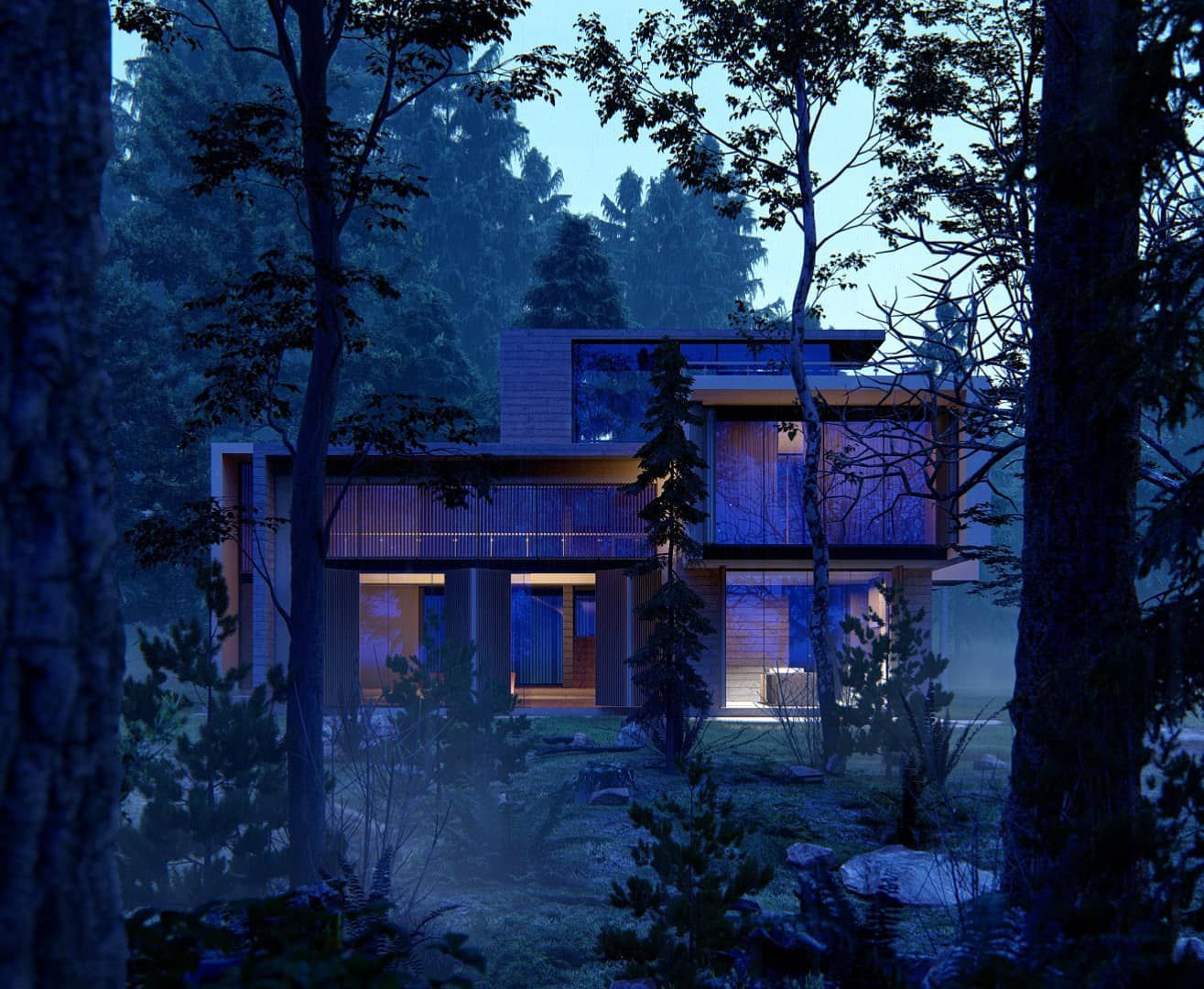How Lumion breathes life into renders
From busy streets to elegant retreats
An untidy bed on a sunny morning. A lively sidewalk in a big city. Discover how Lumion helps architects place their designs in the context of real life.
.jpg?access_token=409bb3fc-a11e-4b89-89b8-13ce40705c13)
Lazy sunny morning, rendered in Lumion by Gui Felix (project by Marcio Kogan of MK27).
There is an entire life within every scene.
It’s the way the leaves of a tree move with the wind or the pair of boots at the end of a long trail of muddy footprints. It’s the energy of a busy public building with its never-ending flow of interesting and unique people, and it’s the feeling of a warm and cozy evening indoors while heavy rains batter the windows.
Lumion places architectural design into this nuanced context of living, from vegetation to texture, from lighting to people. It takes a technical-looking design and transports it to a real-life situation, a moment in time with all of its flaws, chaos and unpredictability. A reality that’s vivid, energetic and full of emotion.
In this blog post, you’ll discover a few examples of Lumion renders that beautifully depict what it means for a 3D rendering to look ‘alive.’ We’ll also look under the hood of a few renders from Lumion users and take a closer look at the specific details that fill a render with life.
Capturing life in architectural renders
Most of us know someone who is full of life. Someone who is vivacious and spontaneous, and always a joy to be around with their energetic personalities.
Spaces can be full of life too. They capture the spark where human activity confronts the built environment, demonstrating the unique flavor of your design and how it was meant to be experienced. So when sharing the experience of the spaces you’ve designed, don’t you want the life in them to shine through?
That feeling of a lived-in space, the signs of invisible life, can take a boring image and transform it into a compelling render of a beautiful design.
.jpg?access_token=7203c4a6-b83c-4b0e-87ae-ceb878a5bff3)
Fortunately, there isn’t only one way to go about showing life in your renders. The possibilities are virtually endless! For example, imagine you want to simply show the “characteristics of being alive.” By including fine-detail nature objects (beautifully textured trees, plants, shrubs and more), animated characters and a few birds in the sky, you can start showing how the world of the living will encounter and interact with your design ideas.
Now let’s imagine you want to demonstrate “a manner of living” in your renders, something you know your client will want to see. With knowledge of the future inhabitants, you can begin revealing aspects of their personalities and lifestyles, whether that’s an expensive vehicle in the driveway, immaculate landscaping, a luxury swimming pool overlooking the ocean, artwork on the walls or design furniture, to name a few.
Life can be a ‘shaping force’. This is the feeling you get when a dark storm is thundering on the horizon, or when a kitchen is bathed in the reddish light of a sunset and tiny particles of dust are floating about. You can feel a force in these situations, an atmosphere defined by everything from the vitality of the weather to the energy of the wind..jpg?access_token=a4ac6b42-0a96-4836-9a26-021d1974b5fd)
There are endless ways to capture life in your renders, no matter if you’re creating static images, animations or 360 panoramas. And with the many intuitive tools, features and effects available in Lumion 11, you can quickly and easily express your unique definition of life, and what it means to your designs.
How to breathe life into rendering
Lumion breathes life into rendering - both the process and the result. It guides you as express the detailed, lifelike vision of your design in its future (or imagined) location. Lumion makes the process of adding life feel like a natural part of your workflow.
In this section, we’re going to explore six different ways to fill your renders with life in Lumion. Follow along and try implementing the following tips into your own 3D rendering projects!
Vegetation
Looking for one of the fastest and most effective ways to infuse life into your design? Start with the vegetation and the vast, biodiverse collection in Lumion’s built-in library of high-quality nature and fine-detail nature objects. Within this category, you can find everything from conifers and palms to grasses and flowers and more.

If you have a specific tree or plant in mind, simply use the search tool and type in the common name of the tree or plant, such as Mediterranean Pine or Kingsville Boxwood. This can be especially helpful when you need the render’s vegetation to reflect the real-life location.
With tools such as Mass Placement, Cluster Placement and Paint Placement, it’s easy to achieve an incredibly lifelike representation of a biodiverse landscape.
.jpg?access_token=b8ee7f69-bfd3-46b8-9656-d74003ed61d2)
Make sure to use the fine-detail nature objects where they’ll have the most impact, such as near the camera where you can really feel the texture of the bark or the leaf venation.
.jpg?access_token=75c2c433-8e3b-42f9-894e-1fcfddeb4d5f)
Red house, rendered in Lumion by Ander Alencar.
Materials and texture
Texture has the unique ability to transform a 3D rendering from a digital representation into a concrete impression that lives in minds of the viewers.
With the help of displacement mapping and Lumion’s built-in library of over 1,250 customizable materials, you can present a beautiful representation of your building materials while helping the viewer vividly imagine the coarseness of the plaster walls, the clap of heels on tile floors, or the feeling of blades of grass tickling their bare feet.
.jpg?access_token=4cbd1fa8-55fd-44e8-85e5-6573896ebeee)
Chair on wooden floor, rendered in Lumion 11 by 3D Fernandes.
Lumion has 229 built-in displacement maps, indicated by a “D” within the thumbnail of the material. With these materials, you can simply toggle the displacement slider. You can also import your own displacement maps for any material choice, whether a Lumion material or an imported one.
Flaws and weathering
No matter if you’re designing a residential home or a city skyscraper, the materials you choose will ultimately face the slow erosion caused by both the natural elements and time. Salty hurricane winds may slam your building every August; skateboarders may grind away the razor-sharp edge of your design’s low, concrete design elements. Copper may simply be old and therefore covered in verdigris.
.jpg?access_token=18f94b8f-4838-461f-81b5-02885033d929)
It’s natural to want to show a flawless depiction of your architectural design, but the reality is that spaces are full of flaws, erosion and degradation. Fortunately, Lumion takes this complex and natural reaction and makes it simple to express in your rendering projects.
.jpg?access_token=4593c24c-b45e-4e7b-be3d-5f636e2fe2e0)
House in Brazil, rendered in Lumion by Gui Felix.
For instance, Lumion’s Weathering slider can add years of decay, erosion and asymmetry with only a slight movement. You can instantly soften the digital harshness of corners with the Edges slider, and even import imperfections such as cracks and water stains with the Import new model option.
Lighting
Lighting is one of the most fundamental elements of a beautiful render. It distinguishes the stale and more digital-looking renders from the images and animations bursting with life. It is typically one more of the more difficult aspects to master in other rendering software, but not in Lumion, where simplicity is the key.
.jpg?access_token=0e8beceb-8e5d-4c08-806a-78216fa71419)
Regency Project, rendered in Lumion by Adam Ingram (Ark Visuals).
Lumion features multiple interior and exterior lighting elements to help you precisely capture things like light direction, diffusion, color, brightness, warmth and so on.
If it’s your first time using Lumion’s light objects, you can quickly master them by merely playing around with the spotlights, omni lights and area lights. Make sure to turn down the natural lighting (with the Weather tab in Build Mode or with the Sun or Real Sky effects), and explore the different things you can achieve, from highlighting furniture with cinematic lighting arrangements to capturing certain lighting conditions, like sunsets or other low-lighting situations.

Parisian street, rendered in Lumion 11 by 3D Fernandes.
If you already know the IES lighting profile of your project, you can also import the IES profile into all the spotlights across your scene, creating that exact lighting balance you desired for the project.
Furniture, objects and people
The Lumion content library gives you, the architect (and not just the rendering expert), a direct way to put the life into your design. With its selection of over 6,200 models, covering nature items, interior and exterior furnishings, transport objects, people and more, you can quickly sort through a diverse range of items and create an accurate representation of a real-life place — as if you took a photograph of the project your mind.
.jpg?access_token=ddb0c5be-0f13-47a5-85d6-b8d9f11ead1c)
Humen High Speed Rail Station Expansion Project Master Plan, rendered in Lumion by Beehive. Architecture and modeling by Aedas.
Whether a small-town neighborhood, a restaurant at a busy downtown corner, or a spacious interior with heaps of natural lighting, the objects you place and position will determine the story, energy and ambiance that you’ll communicate along with your design. For this reason, it’s important to be careful with your placements, using Lumion’s simple Move, Rotate, and Scale features to get the object in the right position, quickly.
.jpg?access_token=8e8ebc55-683c-45aa-99b9-afb1b686c5b6)
Kitchen on a busy day, rendered in Lumion by Aditya Pradana.
Effects, ambiance and emotion
You can tell when people feel an architectural work in their hearts. They react emotionally.
It’s often why you remember the weather on the day you visited a significant building.
Maybe it had finished raining on the night you visited the Eiffel Tower and there was a feeling of romance in the air. Perhaps you hiked to the Solomon R. Guggenheim Museum on the hottest day of the year, turning the concrete jungle of New York City into an oppressive sauna. Or, maybe on a tour of Frank Lloyd Wright’s Taliesin, the sunset over the southern Wisconsin hills was the most unexpectedly beautiful you’d ever seen.
.jpg?access_token=89062e5f-1d06-444b-8ed3-1adf7f82c722)
The atmosphere of a place is how you can connect with your viewers in a very powerful, meaningful way. With the wide range of effects in Lumion’s Photo and Movie Modes, you’ll discover a wide range of intuitive tools perfect for creating atmosphere in your renderings.
.jpg?access_token=e982c05d-4721-4f05-999c-206fe89d51a9)
Backyard design, rendered in Lumion by Stephan Pavlov.
By using one of the Styles, or any combination of Real Skies, Sky Light, Hyperlight, Color Correction and Exposure, you can give your rendering project the basic foundation of a beautiful render.

And with this foundation, you can then go further with atmospheric tools such as Precipitation, which guides you as you create a richly detailed rain or snowstorm. Make sure to pay attention to the precipitation phase, as you can determine whether the storm is arriving or leaving. For the final touches, add a little Fog in the distance to heighten the moody feeling, and then turn up the rain streaks sliders to capture that soothing, relaxing feeling of raindrops racing down the glass.
Bring your designs into life with Lumion 11
From the photorealistic to the more artistic, breathing life into your renders is how you can immediately connect with the viewers of your designs. It provides a familiar platform for you, your colleagues, and your clients to truly review the design and its relationship with its surroundings.
Lumion breathes life into rendering, from the process to the results, by making the entire process simple, direct and relevant to the architectural craft. If you would like to try Lumion with your next rendering project, download the free, 14-day trial version today!